CityTouring
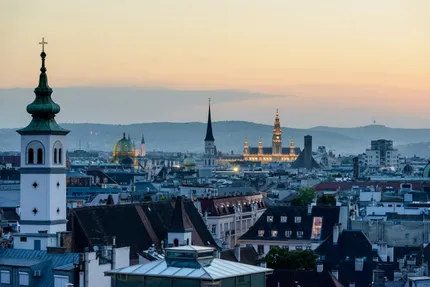
City trip to Vienna
AustriaVienna, the capital city of Austria, seamlessly melds its rich historical heritage with a vibrant modern culture. Known for its imperial palaces, such as the Hofburg and Schönbrunn, Vienna is a treasure trove for history enthusiasts. The city's heart beats in the Innere Stadt, a UNESCO World Heritage site, where charming cobblestone streets abound with cafes and boutiques.
The famed Vienna State Opera and the Musikverein draw music lovers from around the globe, while art aficionados revel in museums like the Kunsthistorisches Museum. Beyond its cultural riches, the city is renowned for its café culture, offering a warm retreat with its delightful pastries and world-famous coffee. The extensive parks, such as the Prater with its iconic Ferris Wheel, provide a green escape within the urban landscape, making Vienna as much a city for relaxation as it is for exploration.
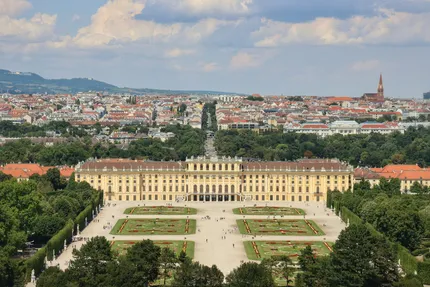
Schönbrunn Palace
A UNESCO World Heritage Site, Schönbrunn Palace is a stunning baroque masterpiece. It has vast gardens, the world's oldest zoo, and offers grand tours showcasing imperial life.
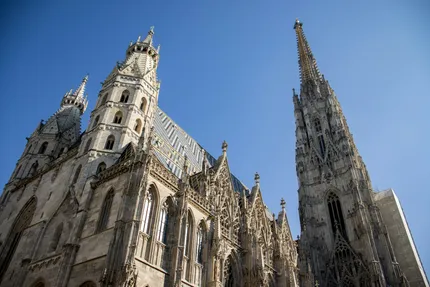
St. Stephen's Cathedral
Vienna's iconic gothic cathedral located in the heart of the city. Known for its stunning architecture, vibrant mosaics, and an expansive view from the south tower.
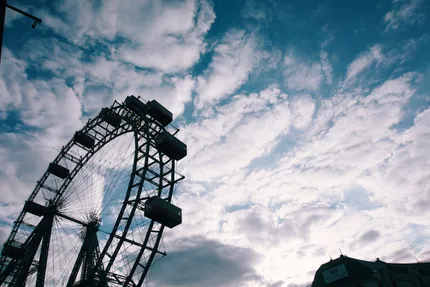
Prater Park and Giant Ferris Wheel
A large public park with an amusement area. Home to the iconic Wiener Riesenrad Ferris wheel, providing panoramic views over the city.
Vienna appeals to a diverse range of travelers. Cultural enthusiasts will find the city's wealth of museums, historic sites, and a rich music scene particularly engaging. It's a perfect destination for those who appreciate classical music and opera, as well as fans of grand architecture. Couples seeking a romantic getaway will enjoy Vienna's elegant coffee houses, horse-drawn carriage rides, and peaceful strolls along the Danube. Foodies will delight in sampling the Viennese cuisine, from traditional schnitzel to exquisite pastries like Sachertorte.
Families, too, will find plenty to keep both children and adults entertained, from the Prater amusement park to the numerous parks and interactive museums. However, if you're seeking a fast-paced nightlife scene, Vienna may appear more subdued compared to other European capitals, though there are still plenty of cozy bars and sophisticated cocktail lounges to enjoy, specifically in the so called Bermuda-Triangle in central Vienna.
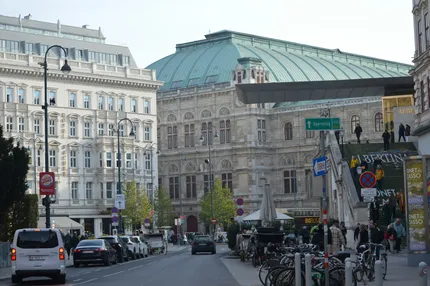
Best time to visit Vienna
The best time to visit Vienna is in the late spring (April to June) or early autumn (September to October) when the weather is mild and the city is alive with outdoor events and vibrant colors.
More activities and things to see in Vienna:
Belvedere Palace
A baroque landmark housing an impressive collection of Austrian art, including Klimt’s ‘The Kiss’. It features extensive gardens that are perfect for a leisurely stroll.
Vienna State Opera
One of the most famous opera houses in the world. Guided tours offer a backstage glimpse, while attending a performance provides a grand cultural experience.
Naschmarkt
A vibrant market in Vienna offering a wide range of international delicacies, fresh produce, and artisan products. It's an excellent spot for food lovers to explore and taste local specialties.
MuseumQuartier
One of the world’s largest cultural complexes, offering modern art, architecture, and design exhibits. Great for those interested in contemporary culture and arts.
Hundertwasser House
An expressionist building designed by artist Friedensreich Hundertwasser. Known for its unconventional design and vibrant colors, it exemplifies Vienna's modern artistic flair.
Spanish Riding School
A historic institute dedicated to classical dressage and the training of Lipizzaner horses. Watch the famous morning exercise or attend a performance to experience traditional equestrian skills.
Karlskirche
Baroque church known for its stunning frescoes and a panoramic view from the dome. It offers a unique combination of artistic beauty and historical architecture.
Kahlenberg
A visit to Kahlenberg offers stunning panoramic views of Vienna and the Danube, surrounded by vineyards and forests. Enjoy hiking trails, cozy cafes, and the historic St. Joseph’s Church.
Vineyards
Vienna is unique as a capital city with significant wine cultivation, boasting over 1,700 acres of vineyards. The vineyards are a great place for long walks with breaks in small local restaurants with local wines.
Getting around in Vienna
Vienna boasts an efficient and extensive public transportation system, making it easy to explore the city without a car. The Wiener Linien operates metro (U-Bahn), trams, and buses that cover most areas of the city, and tickets are affordable. Walking is also a pleasant option, particularly in the central districts, which are compact and picturesque. Vienna is cycle-friendly, offering numerous bike lanes and a bike-sharing program known as Citybike. For those who prefer driving, rental cars are available, but parking can be challenging and expensive in the city center. Taxis and ride-sharing services like Uber are widely available and can be convenient for short trips within the city limits. Overall, a combination of public transport and walking or cycling offers the best experience when getting around Vienna.
Getting to Vienna
Vienna is well-connected internationally via Vienna International Airport (VIE), located approximately 18 kilometers southeast of the city center. The airport serves numerous European and intercontinental flights, making it accessible from major global destinations. From the airport, travelers can reach the city center via the City Airport Train (CAT), which takes about 16 minutes, or the S-Bahn (commuter train) for a more economical option. Long-distance trains run by ÖBB connect Vienna to cities across Europe, including direct routes to Budapest, Prague, and Munich. Vienna can also be reached by long-distance bus services, such as FlixBus, which offer connections to several European cities. These varied transportation options make Vienna an easily accessible destination for international visitors.